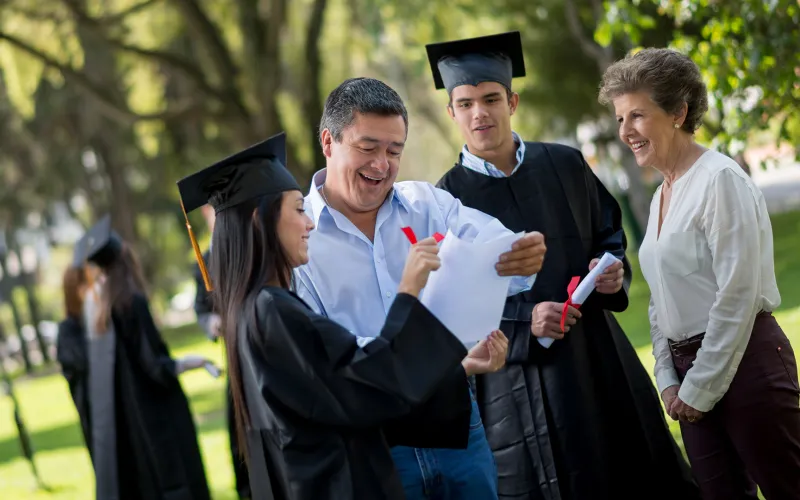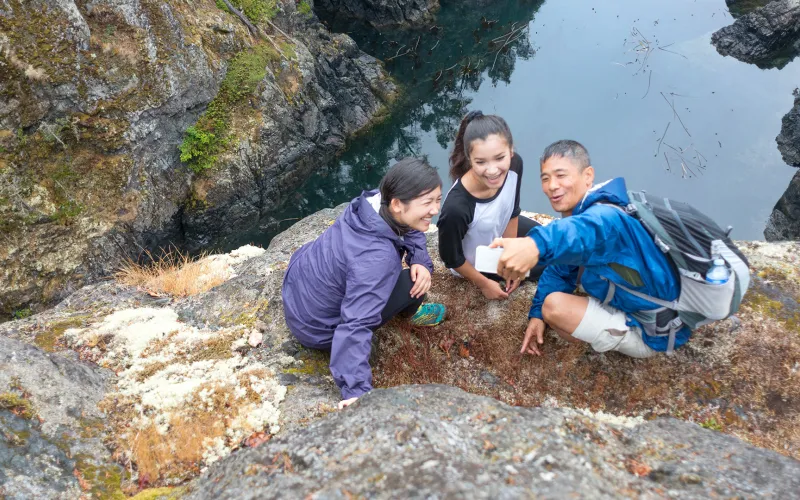
Strategies for accessing your child’s education savings
It's exciting. Your child is about to start university or technical school. And you've helped by building a generous RESP. Now make sure you structure your withdrawals for maximum gain and minimum pain.
If growing that Registered Education Savings Plan seemed straightforward, withdrawing the funds takes a little more planning. Handling the maze of rules, restrictions, and tax matters properly will go a long way to getting the most out of the school nest egg you worked so hard to build.
Cashing in your RESP
Your RESP is a combination of your original contributions, any Canada Education Savings Grant (CESG) or BC Training and Education Savings Plan (BCTESP) money you've received, and investment earnings. You access funds from this savings pot in two ways: through Educational Assistance Payments (EAPs) and Post-Secondary Education withdrawals (PSEs).
EAPs combine the grants you've received and what your plan has earned over the years, regardless of how your money has been invested. PSEs return what you have put in, so they're essentially a refund of contributions.
Does it make a difference which payment type you choose to take first? Drawing EAPs is usually the best place to start. Here's why.
First, the money withdrawn will be taxed as income in your child's hands. Because their income is likely to fall under the basic personal exemption limit, an EAP equates to a tax-free withdrawal. In the unlikely event that their income exceeds the personal limit, they can claim a host of tax credits for tuition fees, textbooks, transit passes, the education amount, even school-related moving expenses. These credits should eliminate, or at the very least, minimize any tax owed on the withdrawal.
There's a second tax-related reason to start with the EAP. If there's money still left in the RESP after your child finishes school, any grant funding has to be repaid. That's why it's good to spend the grants first and leave as much original contribution money as you can in the plan.
One rule to consider is that generally speaking, a full-time student in the first 13 weeks of a program can't draw more than $8,000 for full-time and $4,000 for part-time studies for part time in EAPs. This means unless your child will be living at home while they're going to school or they're enrolled in a modest program, expect to dip into at least a part of your contribution money at the beginning.
If you have a child starting or continuing their post-secondary education, you’ll want to start thinking about your strategy well in advance. Although the actual process usually only takes 7-10 business days, you’ll want to start talking with your advisor and collecting all the documentation you’ll need well ahead of when you’ll actually need the money.
Three steps to releasing your RESP funds
Here are the three key steps to start using your RESP:
- Contact the financial institution holding the plan.
- Provide proof of enrollment, e.g., a copy of the registrar's letter, course registration, or tuition tax receipt (T2202A), as long as it has the beneficiary's name, student ID, and detailed program information on it.
- Complete an RESP withdrawal form. You will need to identify the beneficiary and school, specify EAP and/or PSE amounts. In addition, both the beneficiary (your child) and subscriber (you) must sign for the withdrawal.

When plans change
Everyone has a vision of how they want their child's academic future to unfold. But what if things change? Perhaps your child has decided to delay post-secondary education and work or travel, or not go at all. Wherever your child's path leads, it affects the RESP.
The good news is although RESPs have expiry dates, they're generous. For individual plans, accounts can remain open for 40 years from when they're created, while family plans remain open for 35 years, giving your child plenty of flexibility in managing their studies.
If your child has decided not to pursue post-secondary after all or has left school for good, you have options.
While any grant money received will have to be returned to the government, you can withdraw your own contributions without paying any tax. Alternatively, you can transfer the RESP funds to a sibling's plan.
But if there are no other beneficiaries who can use the money, what happens to the plan's accumulated earnings? It depends.
You will be entitled to the interest if the following conditions are met:
- The RESP has been open for at least 10 years
- All beneficiaries to the plan are 21 or older and none are attending school
- You as the plan's subscriber are a Canadian resident
If the above applies, you can withdraw the RESP earnings through an Accumulated Income Payment (AIP). But beware the tax side. The AIP is considered taxable income, with the amount subject to an additional 20% withholding. To avoid the tax penalty; however, you can transfer an AIP into your RRSP up to your available contribution room, as long as it doesn't exceed $50,000.
Want to avoid risking these complications? If you're planning higher education for multiple children, consider a family RESP over individual plans. A family plan can have more than one beneficiary so if one child doesn't go on to post-secondary schooling, the other beneficiaries under the plan can use the savings for their own education. This eliminates the hassle of either collapsing a plan or transferring funds between plans.
The high cost of higher learning
According to Statistics Canada data from 2022, the average cost one year’s tuition is approaching $7,000. But that's just the beginning.
It's estimated that nearly two-thirds of the annual cost of attending school will come from indirect expenses like shelter, food, and transportation. And the price of tuition will vary according to the program and the institution. For a child living away from home, the full price tag for a year of higher education can be $20,000 or more.
TFSA's role in education savings
While the Tax-Free Savings Account (TFSA) does not qualify for the government grant, it does offer valuable flexibility that might be appropriate for your education savings plan. You can save each year in a TFSA up to an annual limit and withdraw the money tax-free when it's needed. Most importantly, if your child decides not to go on to higher education, none of the investment growth risks being lost. The money is yours to do with as you wish. It's important to remember that TFSAs cannot be opened by individuals under the age of 18 and that TFSA contributions are limited to the holder's annual contribution limit.
Here's one way of combining the power of a TFSA and RESP. Start by putting the first $2,500 you have available each year into an RESP. This will generate the maximum CESG of $500. Then invest up to the annual limit in a TFSA to get the most tax-sheltered flexibility. Also, be sure to start an RESP before the child's seventh birthday in order to apply for the $1,200 BC Training and Education Savings Plan.
Want to learn more?
When it comes to saving and paying for school, there's a lot to study. The Government of Canada offers detailed information on how RESPs work; including what government grants are available, and planning for post-secondary education.

Have a question? Ask an expert
Colin Knight Financial AdvisorMutual Funds Investment Specialist
Our team of experienced professionals are here to answer any questions you may have.

